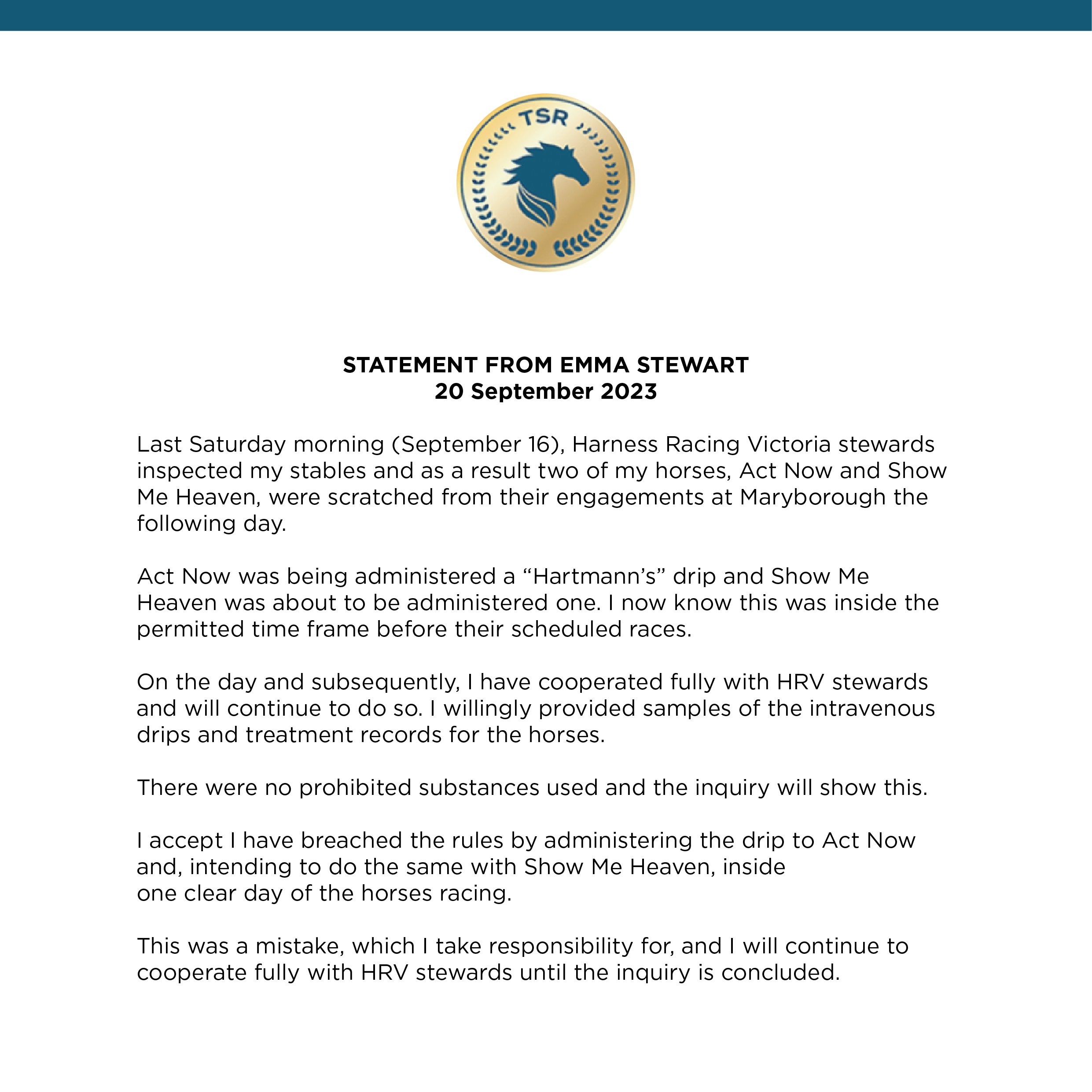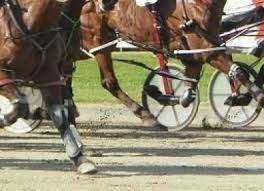Last week the leading Victorian harness racing trainer, Emma Stewart issued a statement via her social media channels in response to the stable inspection which resulted in the scratching of two Maryborough runners due to being found in clear breach of the rules of racing.
 The statement came five days after the news was first made public by HRV Stewards, and almost 24 hours after Anthony Butt became the first industry participant to go on the record and express the views shared by large sections of the industry.
The statement came five days after the news was first made public by HRV Stewards, and almost 24 hours after Anthony Butt became the first industry participant to go on the record and express the views shared by large sections of the industry.
“It’s a dreadful look for the sport when our leading trainers are breaking rules everyone knows about. It’s not as if these rules have just come out, they have been around for a long time,” Butt said while talking to Gareth Hall on SEN Track Radio.
“It was a clear breach and is not a good look and casts a pool of doubt over their success on Saturday night. The authorities will deal with it in the appropriate manner.
“But I’m disappointed in the media too, it’s been brushed under the carpet by just about everybody. If this had happened in galloping it would be headline news. It’s not a good look and it doesn’t shine a good light on the stable,” he said.
On the 17th of December, 2017, Harness Racing Australia issued a press release announcing an amendment to Rule 196C which in lay terms prevents anyone from administering an alkalising agent within 24 hours of race day.
The rule has been in place for nearly six years.
The language of Stewart’s press release is incredulous in the fact it claims “I now know this was inside the permitted time frame before their scheduled races.”
The wording in the statement is a little ambiguous and could be interpreted that Stewart got her timings mixed up, or simply didn’t know the rule.
The former would be incredibly disingenuous given most participants, even those with no physical contact with the animals know of the ruling and it’s interpretation. License holders in Victoria are forced to take a short online test prior to being reissued with their annual ticket to handle horses which covers matters of this nature.
If it was the latter, it’s negligent, naïve, and a slap in the face to every person who holds a license to participate in this great sport. Pleading the fifth after being caught in the act.
In the period between the 17th of December and Stewart learning about the one clear day rule as we are expected to believe, her stable had won in excess of $24million in stakes and a total of 1349 races at a strike rate of around 35%.
The same day Stewart was caught administering in breach of the rules, she won five Group One races on Vicbred Super Series Final’s night.
You can see how this becomes problematic and raises serious red flags about recent and historical success. Regardless of whether anything illegal was in the drips which has been emphatically communicated as being a no, it’s hard not to think one could gain a competitive advantage by administering perfectly legal supplements in this manner within the one clear day of racing. It’s why the rule is in place, is it not?
Are industry participants meant to simply accept the apology as meaning this is the first time the rule has been breached? Or simply the first time Stewart has been caught?
The fact that the issued press release from Stewart came five days late with support from the predictable chorus of media and tv personalities on X (formerly Twitter) is equally troubling given they were missing in action, as alluded to by Anthony Butt on SEN Track.
In the days since the HRV Stewards notified the public, those paid the big bucks to promote the sport continued to promote Stewart and her overarching success, whilst avoiding speaking publicly on the issue.
Given one leading media personality had no trouble contacting Stewart to discern the facts on Tuesday, it’s troubling he felt it was unnecessary to do so prior. All the while the same journalist wrote glowingly about the success of the Stewart barn and detailing possible pathways for horses in her stable beyond the Vicbred Super Series.
The media personality in question earns hundreds of thousands of dollars to cover the sport and with that comes a responsibility to inform industry stakeholders of the good, and the bad.
Can you imagine an athlete or high performance coach in another sport being caught red handed breaching a fundamental rule the weekend it had achieved remarkable success, yet only having their highlight reels dished out for five days while the media ignore the elephant in the room? It wouldn’t happen.
Then when the media do decide to get involved, they simply regurgitate the information provided by the alleged offender and applaud them for being transparent and forthcoming. It’s laughable.
The route chosen by the gatekeepers of the sport, that being the mainstream media, further mars public confidence in harness racing and creates the perception of a coordinated effort to paint Australia’s leading stable in a favourable light.
The same media pushing the ‘mistake’ narrative are nowhere to be seen when smaller players suffer a similar fate.
The social license of racing hangs in the balance, and the perception of the sport not being a level playing field will do little to help us with the punters and sponsors who have walked away from harness racing in their droves.
The last week has done little to nothing in winning them back.
by Brad Reid, for Harnesslink

 USA
USA Canada
Canada Australia
Australia New Zealand
New Zealand Europe
Europe UK / IRE
UK / IRE



